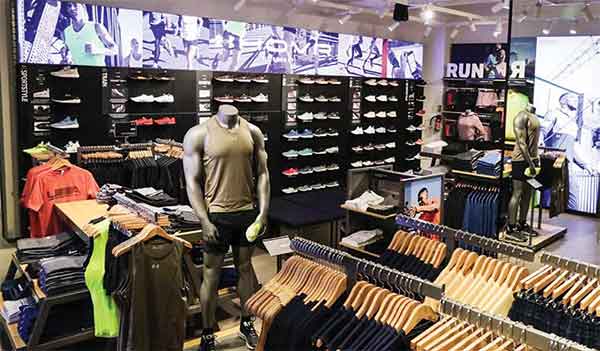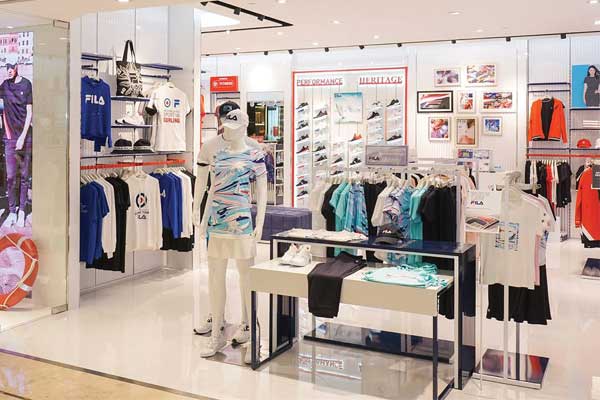In today’s day and age when online shopping is steadily encroaching retail experience, how retailers engage with their customers is a vital issue. To garner brand loyalty and customer satisfaction, fitness retailers might have to go for extra mile to survive. Most of the sports goods stores sell the same product and in the long run, one single franchise can’t hope to win. So, selling solely fitness merchandise will not get the job done. Selling an engaging experience is equally important.
The Employees: The employees, specially the sales persons are the foot soldiers of any establishment. It is imperative to see whether they have genuine interest in the gadgets and equipment or not. Staged enthusiasm can’t be feigned for long. A novice customer may want to know the intricate detail and operations of a ski board or mountaineering gears or a high-end bike. A well-informed sales person is a treasure for any retail stores. Many times, employees themselves can’t buy the product they are selling. It creates an atmosphere of unhealthy attitude that is not pleasant for the customers. When they walk into a store and see a grumpy face that is an immediate red flag. A satisfied employee will assure satisfied customers.
Engaging: Stores need to inspire their consumers. Create a vibrant and playful ambience where people would like to stay for long. Try to build a network of communities which revolve around the store. Create a place where people can exchange their knowledge on latest sports gears or protein powder. As notable author and business strategist Simon Sienk said, “People don’t buy what you make, they buy why you do.” Nike Inc has built stores that are specialized on sports like basketball and soccer where buyers can hang out. That strategy turned out to be very fruitful. The athletic crowd translated to extra sales at a time when America’s shopping malls are going through existential crisis. The basketball-specific stores of Nike are called ‘House of Hoops’.
Designing: We started looking at the aspect of designing to boost sales not too long ago. But it has been scientifically proven certain color, smell, texture, music have a significant role to play when a customer is making a decision on a product. For example, in 90% of the retail stores in America, after entering into a store, customers took a right turn after stepping into the ‘decompression zone’. That zone represents the façade of any store. That is where the customer decides whether the store is within their capacity. After making that decision, they turn to a wall which is called a power wall. It is important to note that the attention of the customer on power wall will be inquisitive. It is vital that the store display their best products on that wall. And how they are displaying is also important. Make sure, there is enough space at the store that will allow the visitor to move freely and explore. In a congested room, the pleasantness can be sullied which is not favorable for a good customer experience.
Technology: This is something both the online and offline shops can agree on. Investment in digitization is indispensable now. And they are lucrative in the long run. Intersport (an international sports goods retailer) customers in Berlin can get a second opinion from Alexa installed by the store. According to a recent survey, 63% of small businesses are facing hurdles because of challenges regarding digitalization.
Again, Nike defeated other competitors in this regard. Mark Quinn from Legett and Plank shared an interesting story on this. He went to a Nike store to buy a pair of trainers. “The sales staff wouldn’t let me buy a pair of shoes unless I got on a treadmill. They taped my running style and explained what type of shoes would be best for me, based on my running tendencies. They played the video back for me, explaining how my foot fell on the treadmill and how that one movement translated to a certain kind of support. I was hooked into buying shoes- and come back-because they have taken the time to educate me.”
French retailer, Decathlon is renowned for their award-winning customer service. New cutting edge technology is behind their impeccable service. Since the May of 2017, the sports goods company is using virtual reality to demonstrate Quechua tents in fifteen or so French stores. Wearing a headset, customer can view every last detail of the tent in imaginary situations and compare models. By this way not only customer experiences fun ride at the store, they get intrigued about the product and keep coming back for more.

Puma, another sports retail giant introduced Kronos in 2009 to enhance and improve their customer service. They deployed application for sales and labor budgeting, optimized scheduling, time and attendance, absence management and workforce analytics across all US locations. The system is also used to develop additional processes, optimize workforce alignment to customer demand, simplify compliance and improve store productivity.
Technology is inevitable to take place. Humans are determined to not give up their place. We are slowly approaching a watershed moment where the stores of the future will be able to answer a lot of question about our civilization.
Disclaimer:
The information contained in this article is for educational and informational purposes only and is not intended as a health advice. We would ask you to consult a qualified professional or medical expert to gain additional knowledge before you choose to consume any product or perform any exercise.






